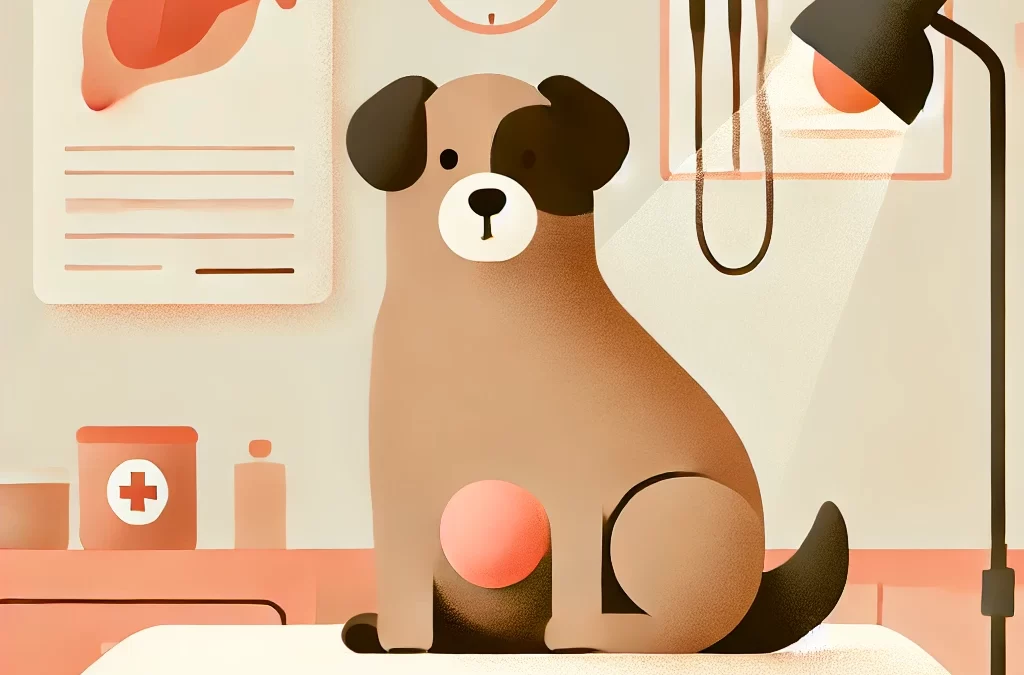Odkrycie guza na brzuchu psa może być alarmujące. Jako właściciele zwierząt domowych, naszym pierwszym instynktem jest często obawa — ale nie wszystkie guzy są niebezpieczne. W rzeczywistości wiele z nich jest łagodnych i można sobie z nimi poradzić przy odpowiedniej pielęgnacji. Aby pomóc Ci poradzić sobie z tą sytuacją, przedstawiamy świeżą perspektywę zrozumienia, identyfikacji i leczenia guzów żołądka u psów.
Czym dokładnie jest guzek w żołądku?
Guzek żołądka u psów odnosi się do każdej nieprawidłowej masy lub obrzęku w okolicy brzucha. Mogą one różnić się rozmiarem, kształtem i fakturą — niektóre są miękkie i ruchome, podczas gdy inne mogą być twarde lub przyczepione do tkanek podskórnych.
Kluczem do radzenia sobie z takimi grudkami jest obserwacja i terminowe działanie. Zanim wyciągniemy wnioski, przyjrzyjmy się najczęstszym przyczynom powstawania tych narośli.
Najczęstsze przyczyny powstawania guzów w żołądku
- Lipoma (guzy tłuszczowe): Są to łagodne, miękkie i wolno rosnące guzy powszechnie występujące u starszych psów. Lipomas rzadko stanowią zagrożenie dla zdrowia i zwykle są raczej problemem kosmetycznym.
- Krwiaki lub ropnie: Jeśli Twój pies niedawno doznał urazu, guz może być krwiakiem (nagromadzeniem krwi pod skórą) lub ropniem spowodowanym infekcją. Często są ciepłe i wrażliwe na dotyk.
- Przepukliny: Przepukliny powstają, gdy tkanki wewnętrzne lub narządy przeciskają się przez słabe miejsce w ścianie brzucha. Mogą być miękkie i zmniejszać się po delikatnym naciśnięciu.
- Nowotwory złośliwe: Niestety, niektóre guzy są nowotworowe. Guzy komórek tucznych, mięsaki tkanek miękkich i inne nowotwory złośliwe często wymagają natychmiastowej interwencji i leczenia weterynaryjnego.
- Cysty lub narośla gruczołów łojowych: Są to często wypełnione płynem worki lub zatkane gruczoły, które mogą pojawić się na żołądku psa. Są one zazwyczaj nieszkodliwe, ale mogą wymagać drenażu lub drobnej operacji, jeśli staną się zbyt duże.
Znaki wymagające natychmiastowej uwagi
Choć nie wszystkie guzki w żołądku powinny budzić niepokój, pewne objawy wskazują na konieczność pilnej wizyty u weterynarza:
- Guz szybko rośnie.
- Pies sprawia wrażenie, jakby odczuwał ból, gdy ktoś dotyka tego obszaru.
- Guz jest twardy, nieruchomy lub ma nieregularny kształt.
- W okolicy występuje zaczerwienienie, obrzęk lub wydzielina.
- U Twojego psa występują objawy letargu, utraty apetytu lub innych problemów ogólnoustrojowych.
Co zrobić, jeśli odkryjesz guzek
- Monitoruj guzek: Śledź jego rozmiar, teksturę i zachowanie. Robienie zdjęć co kilka dni może pomóc Ci zauważyć wszelkie zmiany.
- Zaplanuj wizytę u weterynarza: Lekarz weterynarii może przeprowadzić badanie fizykalne i zalecić testy diagnostyczne, takie jak biopsja aspiracyjna cienkoigłowa, biopsja lub badanie USG, w celu określenia charakteru guza.
- Rozważ opcje leczenia: W zależności od diagnozy weterynarz może zasugerować obserwację, leki, operację lub inne terapie. W przypadku łagodnych narośli, takich jak tłuszczaki, leczenie może nie być konieczne, chyba że guzek powoduje dyskomfort.
- Poznaj naturalne środki lecznicze (za zgodą weterynarza): W przypadku niezłośliwych narośli niektórzy właściciele zwierząt domowych sięgają po naturalne suplementy, takie jak kurkuma, kwasy tłuszczowe omega-3 lub ziołowe kuracje, które wspomagają ogólne zdrowie układu odpornościowego. Zawsze skonsultuj się z lekarzem weterynarii przed wprowadzeniem jakiegokolwiek nowego suplementu.
Porady dotyczące profilaktyki dla zdrowego psa
- Regularne kontrole: Wczesne wykrycie jest kluczowe dla skutecznego leczenia guzów. Regularne wizyty u weterynarza zapewniają, że wszelkie zmiany zostaną szybko zaadresowane.
- Zbilansowana dieta: Dieta bogata w składniki odżywcze może wspierać ogólny stan zdrowia i odporność Twojego psa.
- Utrzymaj zdrową wagę: Otyłość zwiększa ryzyko wystąpienia guzów tłuszczowych i innych problemów zdrowotnych. Utrzymuj psa w aktywności i przy idealnej wadze.
- Pielęgnacja skóry: Regularne czesanie oraz kontrola sierści i skóry psa mogą pomóc we wczesnym wykryciu nieprawidłowości.
Słowo pocieszenia
Nie każdy guz zagraża życiu, a postęp medycyny weterynaryjnej sprawił, że diagnoza i leczenie są skuteczniejsze niż kiedykolwiek. Pozostając uważnym i proaktywnym, możesz zapewnić, że Twój pies będzie szczęśliwy i zdrowy.
Jeśli zauważysz guzek w żołądku, weź głęboki oddech i skontaktuj się z weterynarzem. Razem znajdziecie najlepszą drogę naprzód dla swojego futrzanego towarzysza.
Tagi: guz w żołądku u psa, przyczyny powstawania guzów u psów, leczenie guzów u psów, opieka zdrowotna nad psami, łagodne guzy u psów, naturalne środki zaradcze dla psów















